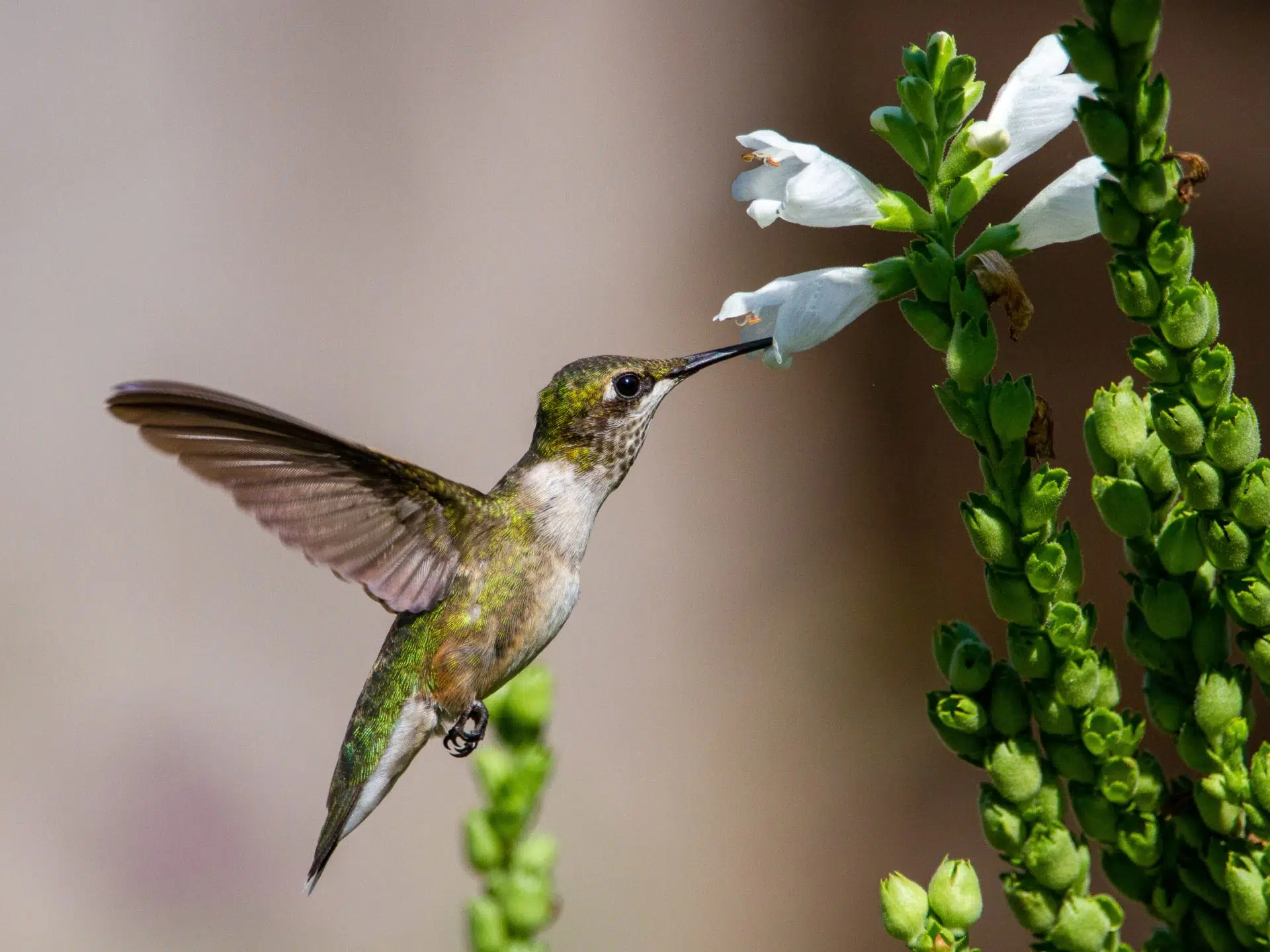Birds
Ruby-throated Hummingbird
Arcilochus colubris

Voice: Males sing a constant series of monotonous chips early in the day. Both sexes make high chips and speaks while in flight or being chased.
Ruby-throated hummingbirds are found in open deciduous woodlands of eastern North America. They are typically seen flying acrobatically around forest edge, old fields, orchards, parks, gardens and backyards. They have unique physical adaptations in their bones and muscles which allow them to fly straight up, straight down, backwards, and forwards. They can also hover for long periods of time and do aerobatics such as backward somersaults.
Ruby-throated hummingbirds primary food source is nectar. They lap up nectar with their tongues rather than using their beaks for straws. They can lick 10-15 times per second while feeding. They are particularly fond of tubular red or orange flowers such as cardinal flower, coral honeysuckle, jewelweed, bee balm, columbine and red buckeye. They are omnivore sometimes feeding on insects and spiders. They can catch insects such as mosquitos, gnats, fruit flies and bees in midair or pull them out of spider webs. Ruby-throated hummingbirds will also forage for insects attracted to oozing sap from trees or by capturing small caterpillars and aphids from leaves.
Ruby throated hummingbirds are the only species of hummingbirds to breed in Eastern North America. Once males establish a territory, they court females with signature fluttering sounds while flying, diving and showing off their red throat. They usually mate with more than one female during breeding season.
When mating is over, female ruby-throated hummingbirds do not interact with male hummingbirds. Females build nests in deciduous tree such as oaks, birches and poplars. They will occasionally build their nests in pine trees. Nests are constructed in five to six days; ten to fourty feet above ground on downward sloping forked slender branches. Nests are two inches across and one inch deep; made of thistle or dandelion down held together with strands of spider silk. The outside of the nest is camouflaged by lichen and moss.
In early June female ruby- throated hummingbirds lay two elliptical white eggs about the size of a navy bean. Females incubate the eggs for about sixteen days. Females tend to young. Young fledge the nest in nineteen to twenty two days. Females usually have one to two sets of young per breeding season. Females may begin building second nest while still feeding young from the first nest.
According to the North American Breeding Bird Survey, ruby-throated hummingbird populations have increased every year from 1966 to 2014. Partners in Flight estimate a global breeding population of 20 million. Hummingbird feeders have helped supplement ruby-throated hummingbirds’ diet. However, they can also create a problem for local populations if they are not maintained regularly and placed in proper locations away from housecats and windows.
Best Location to View: Pollinator Garden, Butterfly Garden, Wildflower Garden
Color: Emerald on back and crown; underparts gray to white. Male: iridescent red throat in good light
Range: Breed throughout eastern to midwestern North America, from southern Canada to the Gulf of Mexico; Winter in Mexico, Central America, Caribbean islands and a few remain in the Gulf states
Size: 2.8-3.5"
Wingspan: 3.1-4.3"




